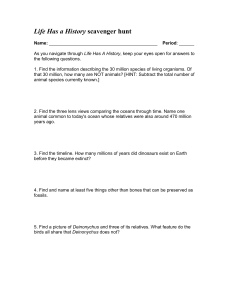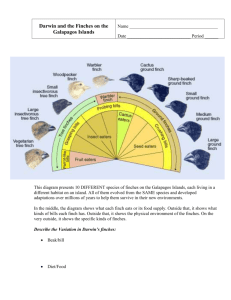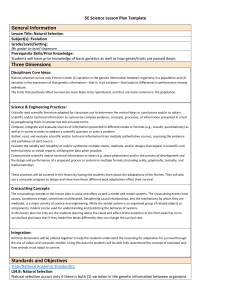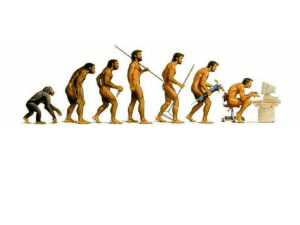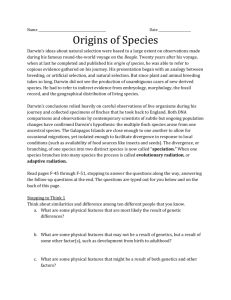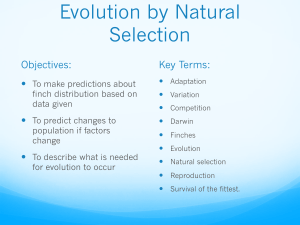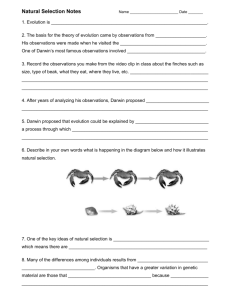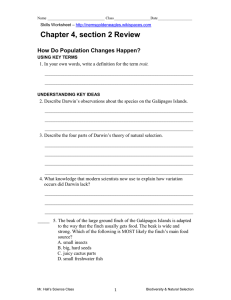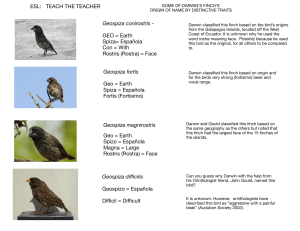Lecture 3. Evolution
advertisement
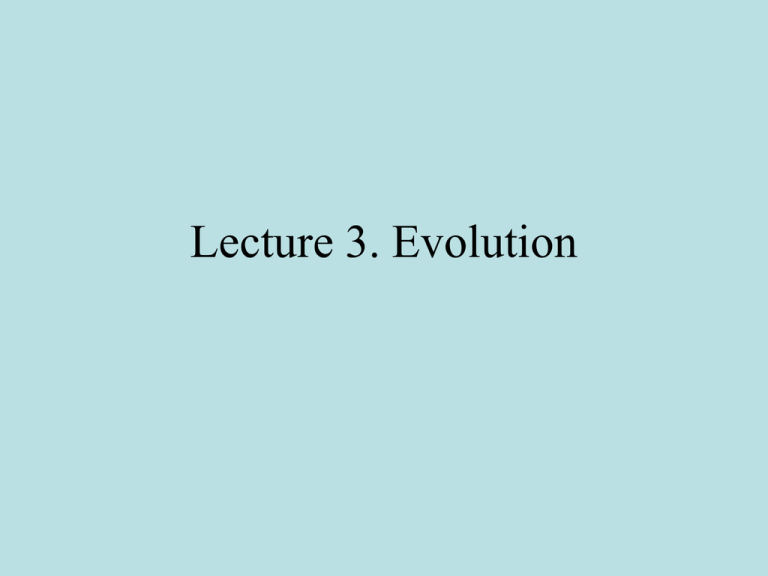
Lecture 3. Evolution Alfred Russel Wallace “On the Origin of Species by Means of Natural Selection, or the Preservation of Favoured Races in the Struggle for Life” (1859) Darwin’s Theory of Evolution • Variation: There is variation among the individuals of most natural populations • Inheritance: Some of that variation is inherited • Competition: Populations tend to produce more offspring than the evolution can support • Survival of the Fittest: Those individuals whose traits best adapt them to the environment will survive better and leave more offspring than those with less adaptive traits Key forces which influence the evolution of species • Environmental changes (e.g. geographic isolation of marsupials) • Random factors (e.g. Genetic drift due to the founder effect) CONVERGENT EVOLUTION * * •Different species come to resemble each other due to the similarities in their habitats (ecological niches) * DIVERGENT EVOLUTION •Increasing separation between related species due to the process of adaptive radiation * Analogous structures • Structures that are similar in the way they look because they share similar function but evolved independently Homologous structures • Structures that share the same origin (e.g. ancestral mammalian limb) but serve different function in different species Analogous structure VESTIGIAL ORGAN: no longer useful but still retained A vestigial structure in the skeleton of a baleen whale. The pelvic bones have no apparent function. Common Fallacies about Evolution <-HUMAN • Progressivism Fallacy • Teleology Fallacy (Purposivism Fallacy) How Fast is Evolution? • Gradualism Hypothesis (Charles Darwin) • Punctuated Equilibrium Hypothesis (Stephen Jay Gould and Niles Eldrege) DARWIN’S FINCHES Natural Selection in Action * Daphne Major Normal year Drought year The story of the ground finch • Medium Ground Finch (Geospiza fortis) • Seed Eater • Every year on Daphne all the birds are caught and measured • Their food size is measured Ground finch Beak Depth is Inherited What happened to the food ? Drought Seed size and hardness Figure 01.08 Year What happened to the finches? Drought Beak size Year Finch Summary • Beak depth is a trait that responds to changing environmental conditions • Beaks appear to be an adaptation for feeding • Evolution is a process-continually in operation – Sometimes measurable in real time Darwin’s Theory of Evolution • Variation • Inheritance • Competition • Survival of the Fittest


